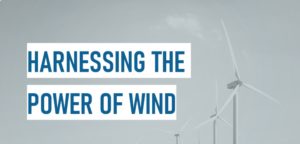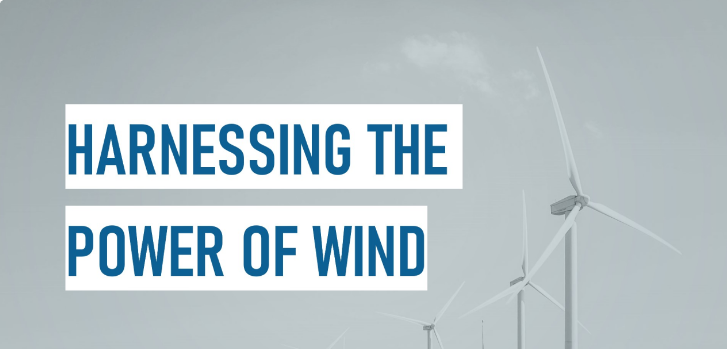Taming the Wind: The Next-Generation Innovations in the Future of Wind Energy
The world is rapidly moving towards renewable sources of energy, and at the forefront of this move is wind power. Wind energy innovations are coming that will help increase efficiency, lower costs, and give a significant boost to leaving a sustainable future behind. With countries striving to bring down carbon emissions, technology is revolutionizing the way wind energy is captured and converted into usable forms.
It’s not just about larger turbines; even smarter integration and energy storage solutions that turn the wind into such a more reliable source of energy are being developed. In this respect, learning about these new developments will be very important since wind is taking the leading role in the global energy market.
There is great promise for wind energy since continuous research into and development of technologies is ongoing. Therefore, all these changes would imply an increase in the chances of finally developing a world that is more sustainable and generally more energy-efficient.
Key Takeaways
- Newer Technologies Are Advancing the Efficiency of Wind Turbines.
- More Apt Energy Storage Solutions Are Making Wind Energy Much More Reliable.
- The Future of Wind Energy Is Essential to Sustainable Energy Goals.
Advancements in Wind Turbine Technology
Recent developments in wind turbine technology aim to further improve efficiency, durability, and integration into the energy grid. The future of wind energy is shaped by a number of innovations in materials, offshore installations, and smart technologies.
Materials and Design
Improvements within the advanced materials arena have given a whole new face to wind turbine design. Lightweight yet robust materials, such as carbon fiber and advanced composites, are the materials used in modern turbines. That transition has enabled the construction of taller towers and larger blades to the effect of catching more energy.
Blades are also being designed more effectively. Newer aerodynamic shapes create reduced drag and better performance at lower wind speeds. Variable pitch systems allow adjustment of the blade angle to optimize energy production based on wind speed. Development of these mechanisms results in higher efficiencies with reduced operational costs.
Offshore Wind Developments
High-tech advances have thus enabled wind energy to take an increasing share of offshore resources, rapidly expanding this source of energy. Larger turbines rated at 10 MW or more can be placed further from the shore, capturing stronger winds while minimally affecting local communities.
Floating wind farms will also increase in popularity. These enable installation in deeper waters where the winds are more constant. Technologies like dynamic positioning systems improve stability, enabling better capture of energy with reduced maintenance challenges.
Smart Wind Farms
Smart technology is indeed changing how wind farms work. Sensors and IoT devices pick up real-time data on the weather and turbine performance. The information shall add to predictive maintenance, reducing downtime and costs.
Grid integration is improved as well. Advanced software allows for better management of how wind energy is distributed and times of energy production with demand; hence, wind energy becomes a more reliable source in the energy mix.
Integration and Storage Solutions
The extraction of wind energy has to be aligned well with the already existent power mechanism. This would call for better integration techniques as well as appropriate storage of energy. These two components are considered very vital in the fullest utilization of wind energy.
Techniques of Grid Integration
Grid integration refers to the process through which electrical grids integrate wind energy efficiently. In this respect, there are two approaches that can be employed to be able to do this: by direct connection and through smart grid technology.
The direct connection links the farms directly to the transmission network. This system allows immediate transfer to the grid during periods of high production, which might bring congestion to the grid.
Smart Grid Technology enhances the communication between the energy producers and the consumers. It integrates sensors and automation to achieve a balance between supply and demand. In this way, energy can be shared from the wind even when there is a variation in the wind speeds.
These technologies contribute to enhancing the management of wind energy and thus making the source quite reliable for power supply.
Energy Storage Systems
Energy storage systems are some of the key support systems to wind energy. Since the generation of wind power is variable, the storage helps to bridge the gap when the production is below expectation.
Batteries are the more conventional storage solutions. They allow for swift release of energy and, thus, help to support peak demands. Depending on the exact type of batteries, different advantages become available regarding capacity and discharge times.
Another effective method is that of Pumped Hydro Storage. In this process, the excess wind energy needs to be used for storing energy by pumping water uphill. For energy utilization, water is released to generate electricity.
These kinds of systems increase the reliability of wind energy, hence making it a prime commodity in the future towards solving energy problems.

Also Read :
- From Fossil Fuels to Renewables: The Transition to a Clean Energy Future
- Innovations in Renewable Energy: What’s Next for Green Technology?
- Breaking Down the Basics: How Renewable Energy Works
- Wearable Tech: Enhancing Health and Lifestyle
- The Role of Solar, Wind, and Hydropower in a Sustainable Future
